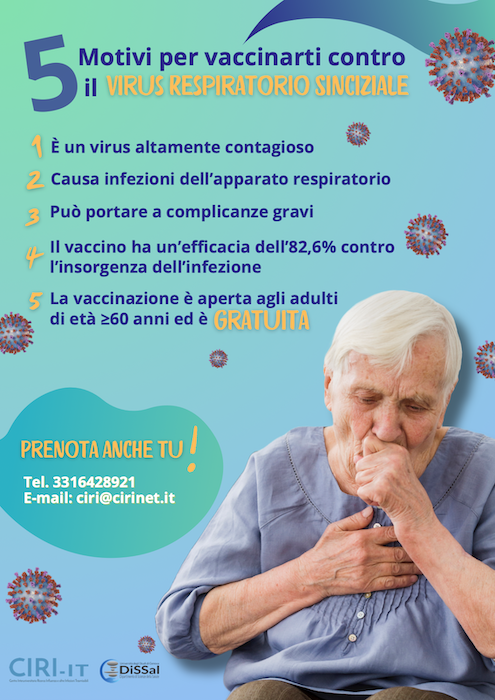What Is Influenza?
Influenza is a seasonal infectious disease caused by influenza viruses.
There are three distinct types of influenza viruses, classified based on the proteins on their surface: types A and B, which cause classic flu symptoms, and type C, which usually results in asymptomatic or mild cold-like illness. A key feature of influenza viruses is their ability to change the characteristics of their surface proteins. Due to this property, annual flu epidemics occur, and unlike many other diseases, an influenza infection does not provide long-term protection against future infections. For this reason, the flu vaccine must be reformulated each year to match the circulating strains and administered every flu season.
Modes of Transmission
Influenza spreads from an infected person to a susceptible individual primarily through respiratory droplets produced during coughing, sneezing, or speaking—this is known as direct transmission. It can also be contracted through indirect contact, by touching surfaces or objects contaminated with saliva or secretions from infected individuals.
An infected person can begin transmitting the virus up to 24 hours before the onset of symptoms. Typically, the virus is no longer detectable in nasal secretions after about 7 days. However, in young children and individuals with compromised immune systems, the virus may persist for a longer period. Transmission is more likely in crowded environments or places with frequent close contact, which explains why influenza spreads more widely in the winter months.
Symptoms and Complications
Influenza is usually a self-limiting disease with a benign course. However, in certain groups such as children and the elderly, it can lead to serious complications. The incubation period is short, usually 1–3 days, and symptoms tend to appear suddenly. These include: high fever with chills, headache, general malaise, muscle and joint pain, loss of appetite, conjunctivitis.
These are often followed or accompanied by respiratory symptoms: cough, sore throat, nasal congestion.
In children, gastrointestinal symptoms such as nausea, vomiting, and diarrhea may also occur. While most people recover without any lasting effects, complications can arise and may even be fatal. Those at higher risk include children, the elderly, and individuals with chronic conditions. Complications generally occur when the infection spreads beyond the upper respiratory tract to the lower airways, such as the bronchi and lungs.
Common complications include bronchitis and pneumonia. Pneumonia is particularly dangerous for individuals with pre-existing pulmonary or cardiovascular conditions and significantly increases hospitalization rates—by 3 to 5 times. Other possible complications are sinusitis and otitis media, especially in children. In high-risk individuals, influenza may also cause rapid worsening of underlying health conditions and may result in death.
High-Risk Groups
High-risk groups include individuals who are more likely to develop severe complications if infected. The European Centre for Disease Prevention and Control (ECDC) identifies two main risk categories:
- older adults (≥65 years of age)
- Individuals (≥6 months of age) with pre-existing chronic medical conditions
These conditions may involve the:
- Respiratory system (e.g., asthma, chronic obstructive pulmonary disease – COPD)
- Cardiovascular system (e.g., coronary heart disease)
- Endocrine system (e.g., diabetes)
- Liver (e.g., liver cirrhosis)
- Kidneys (e.g., chronic renal failure)
- Neurological or neuromuscular system (e.g., Parkinson’s disease)
- Immune system (e.g., individuals undergoing immunosuppressive therapy, post bone marrow transplant, or living with HIV)
Other high-risk groups include people with obesity (BMI > 40), individuals of any age with physical disabilities, pregnant women, and infants aged 0 to 6 months. Special attention should also be given to healthcare workers, who are at increased risk of exposure and can facilitate the spread of the virus within healthcare settings.
Impact on the Population
Influenza is a seasonal disease that typically peaks in winter in Italy, especially between December and March. Sporadic cases can also occur outside of the usual flu season, although incidence is very low during summer months. Influenza is one of the leading causes of medical consultations and hospitalizations and is the primary cause of work and school absenteeism—accounting for about 10% of all work absences. During flu season, absenteeism increases by 56%, resulting in the loss of approximately 500,000 workdays at the peak of flu activity.
Due to the high number of cases reported annually, influenza represents a major public health concern. The scale of its impact varies depending on the transmissibility of the circulating strains. Since flu symptoms can resemble those of other illnesses, this often leads to two main issues: over-hospitalization of patients with non-influenza respiratory syndromes, and underestimation of the morbidity and mortality specifically attributable to influenza.
While flu can affect people of all ages, certain groups are more vulnerable, particularly children, older adults, and individuals with chronic illnesses. The estimated annual incidence of influenza is between 10% and 20% of the general population.
During pandemics, this number may rise to 50%. Children aged 0 to 14 years are the most affected group (with an incidence rate of around 15%), whereas mortality is highest among individuals aged over 60, accounting for 90–94% of influenza-related deaths. In fact, age over 65 alone is associated with a 70% increased risk of developing complications.
References
- https://www.vaccinarsinliguria.org/scienza-conoscenza/malattie-prevenibili/influenza
- https://www.trovanorme.salute.gov.it/norme/renderNormsanPdf?anno=2023&codLeg=93294&parte=1%20&serie=null






